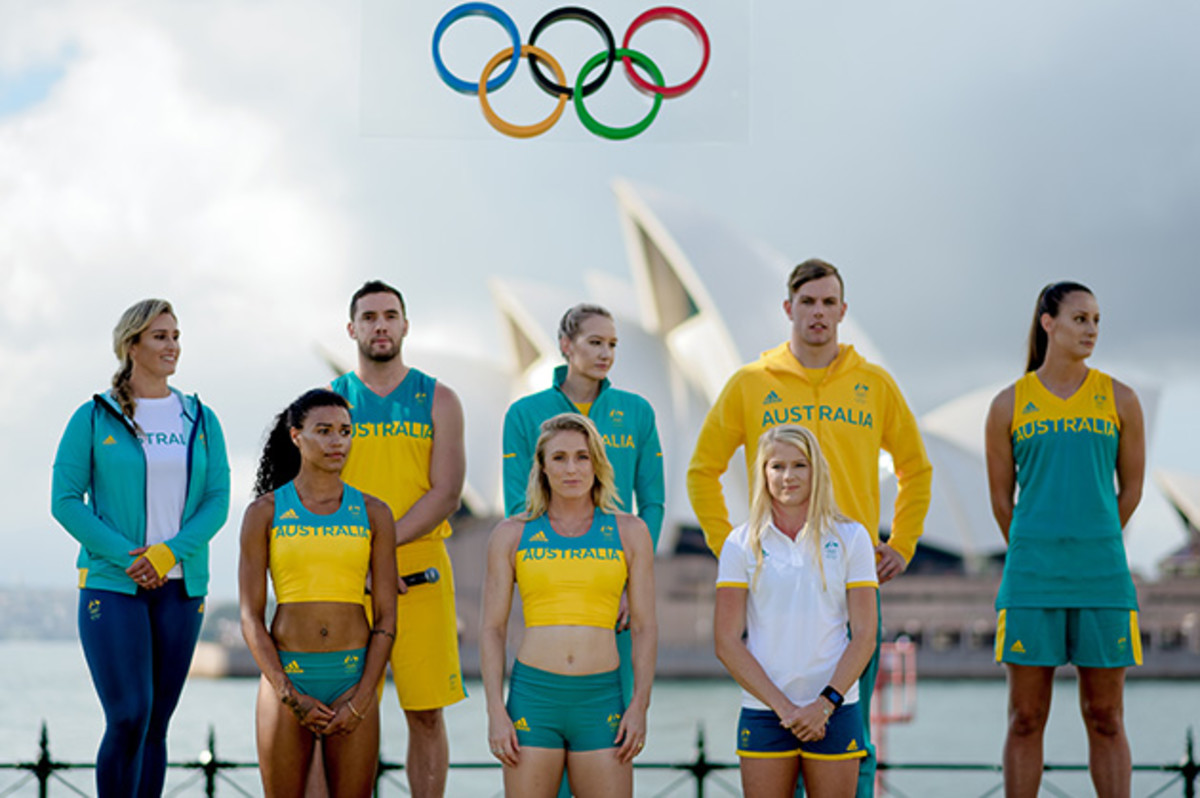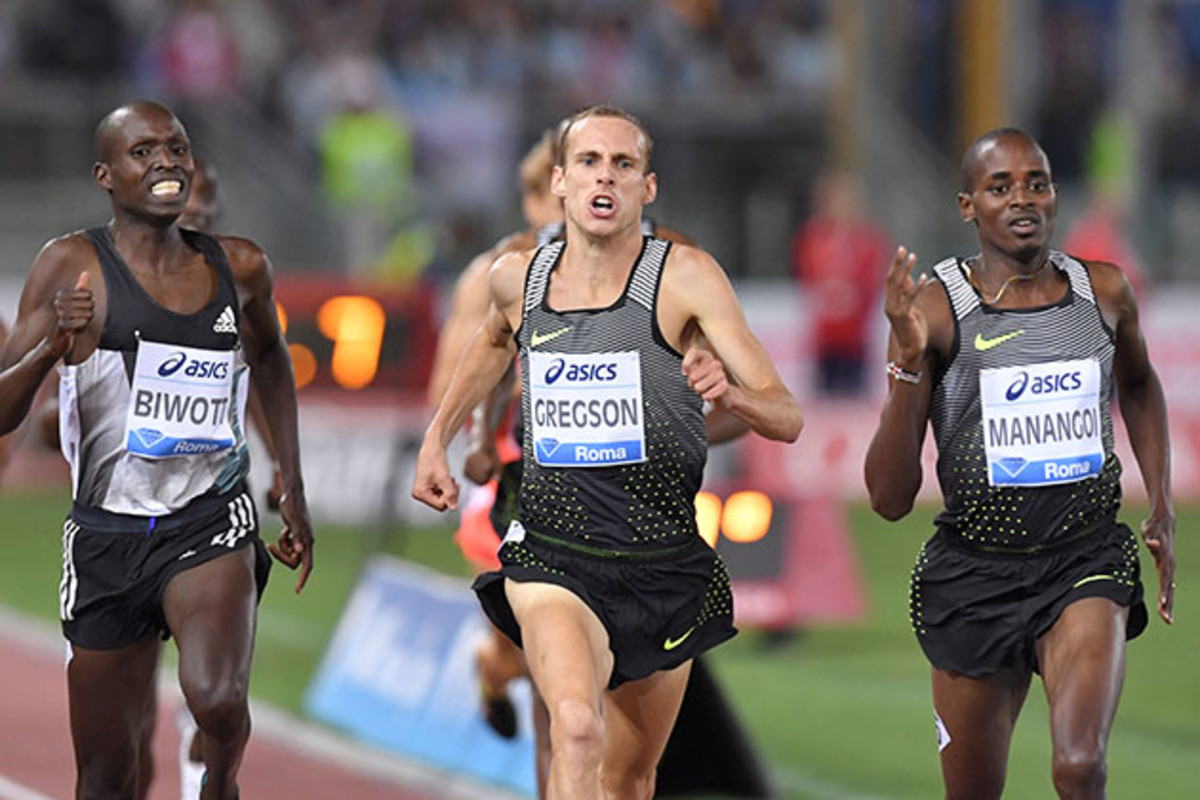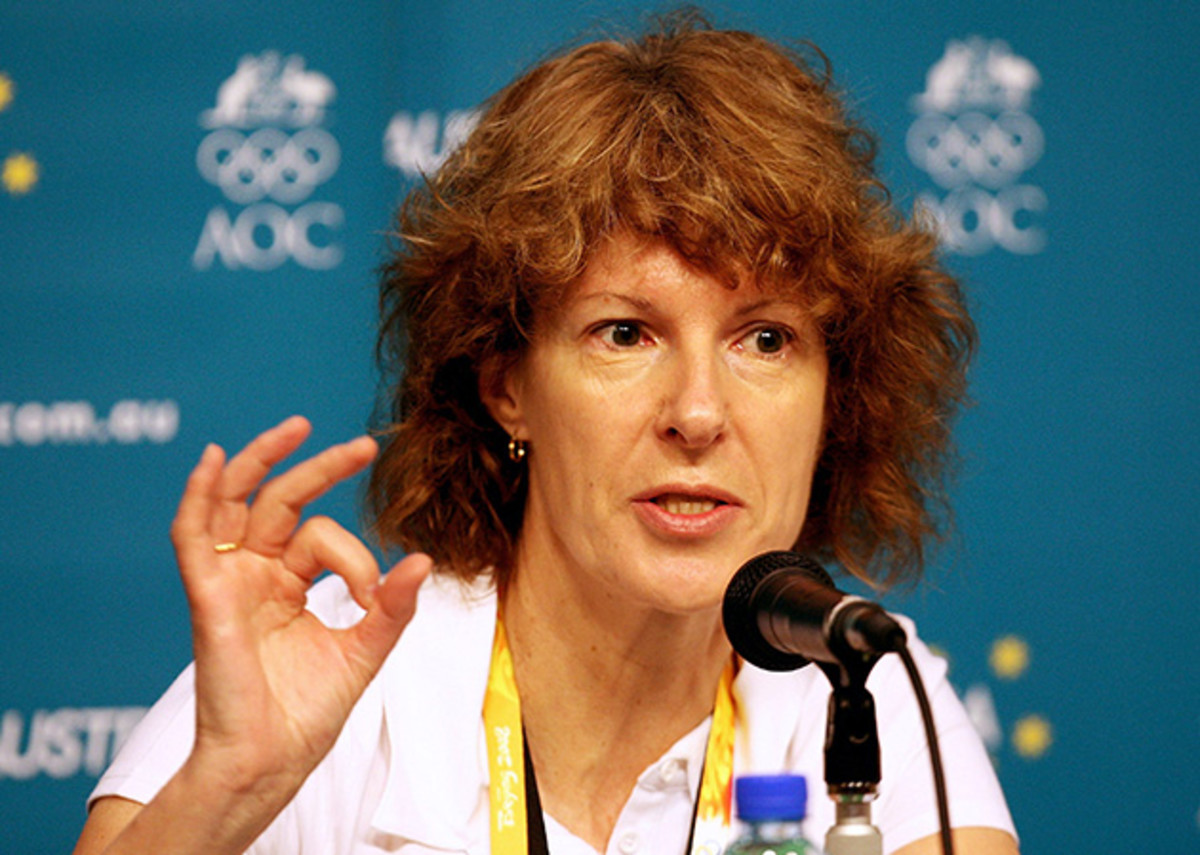Australia's head of nutrition Louise Burke: How to fuel Olympic athletes

It is no secret that Australia does well at the Olympics for a country of only 22 million people. Many years they are in the top five or ten countries in terms of medals per capita. One reason for this is the Australian Institute of Sport (AIS), which is “Australia’s strategic high performance sport agency. The AIS is responsible and accountable for leading the delivery of Australia’s international sporting success.” Part of that success stems from an integrated program of talent identification, exercise science, sports nutrition, and expert coaching. One of the key players is Dr. Louise Burke who heads a wide ranging sports nutrition program at the AIS.
She not only worries about literally the care and feeding of a large number of athletes she also conducts cutting edge research on issues related to diet and performance. I visited the AIS last December and was struck by how Dr. Burke moves back and forth between dealing with the athletes and managing her research team.

Michael Joyner: Do you have a single biggest focus as you help Australian athletes get ready for the Rio 2016 Olympics? Or is it targeted problem solving and advice depending on the situation?
Louise Burke: I am the lucky leader of the fantastic team that is AIS Sports nutrition, with most of our sports dietitians being embedded with our key sports and their Rio-bound athletes. We divide our time between directly working with these athletes within their daily training environment and competition opportunities, and working as a team to tackle issues at a system level. At the end of the day, we need to develop specific solutions to help each athlete perform at his or her best, but along the way it can help to increase the capacity of our sports system if we work together on projects—research, education, protocols, etc.—that tackle some common issues.
MJ: There will be plenty for your athletes to eat once they get to Rio, but is your group doing any special logistical planning?
LB: The Rio scenario will see most of our athletes living in the Olympic Village enjoying the hospitality of the athlete dining hall and other catering opportunities in the Olympic bubble. The logistics of feeding 15,000 athletes and their support crew are overwhelming, but the IOC and each local Olympic Organizing committee rise to the occasion every time to produce a wonderful experience. Of course, like many other countries, we have recognized opportunities to set up some locations and resources outside the Village to help athletes who are competing at the “far flung” sites.
New wearable neck collar could help reduce brain injuries in athletes
MJ: The size range and diversity of the athletes you deal with is vast. How is the advice the same or different for a male shot putter vs. a tiny female distance runner?
LB: Nutrition advice for athletes needs to be personalized, practical and specific to the task. There are clear differences in the needs of a huge male shot putter and a tiny female distance runner—the absolute energy needed to support their body mass might be at opposite ends of the spectrum, as are the type and quantity of the fuel needs of their training programs. Competition nutrition will look very different for someone who needs to perform a highly explosive activity several times over a couple of hours (and perhaps repeated for heats and finals) and the athlete whose goals are to maintain the highest power output and economy of movement possible over 2.5 hours with opportunities to take on fuel and fluid while on the move to support these goals.
The types of performance supplements that could provide a small contribution to optimizing the outcomes of these efforts are also different. But what many people don’t realize about modern sports nutrition is the degree to which nutrition goals and requirements change for the same athlete—over their career, over their competition year and even within a week. A big theme in modern sports nutrition is periodization—recognizing that needs change from day to day according to the exercise load, and that the timing of nutrition within the day is also important in maximizing the results of the training process or competition recovery. Just as there is no such thing as “the athlete’s diet,” there is really no such thing as a shot putter’s diet or a marathon runner’s diet anymore. Rather, we integrate a whole lot of different and targeted eating practices to support the various elements of the athlete’s training and completion plan.
MJ: The AIS keeps an evidence-based listing of supplements with information about how well they work. Does your team recommend anything specific, or do you put the information out there and let the athletes and coaches decide what they want to use?

LB: Our philosophy is that it is the athlete’s responsibility to make the final decision about the involvement of supplements and sports foods in their nutrition plans. But this needs to be an informed decision, and our role is to help sporting organizations develop protocols that support safe, ethical and evidence-based uses of supplements and sports foods at the bigger level, as well as resources that help athletes make their individual decisions and practices at the micro-level. The AIS Sports Supplement Framework was developed to educate athletes about different types of supplements and sports foods, and general issues around their use. We also try to contribute to the research that underpins this information.
MJ: You hear a lot about paleo diets in the U.S. There are a lot of definitions of it but it seems to center on more meat, less grains and less refined food in general. Are any of the athletes you deal with using this approach? What are your thoughts about it?
LB: Paleo provides a good example of a general trend with popular diets. At the core, there is a guru (Loren Cordain), some central theories (we aren’t evolved to eat a modern diet, we need to eat like our Paleolithic ancestors) and a set of rules that have some merit (we should eat fewer processed food and more wholesome, natural foods) but aren’t totally evidence-based (in fact, there never was a single diet consumed by early humans).
How Lululemon's high-tech lab designs Olympic uniforms for Rio
The modern trajectory for most popular diets is that they burst onto the scene and gain huge publicity via support from traditional and social media, and uptake by celebrities and other people with popular influence. The rules are tightly adhered to by the first wave of followers, and because the rules of What Can’t Be Eaten typically make it difficult to eat as much as normal, weight loss and associated benefits are a common experience. Unfortunately for the diet, its next phase involves the take up by wider set of people and spinoffs by the food industry, hospitality industry and the secondary book/cookbook industry. Suddenly, there is a proliferation of Paleo cafes, Paleo dessert books, Paleo food products etc. And the next wave of devotees isn’t so committed to marching to the drum. They are Paleo-ish—choosing the bits and pieces of the diet that appeal to them. Or just replacing chocolate bars with Paleo Bars full of contrived ingredients. I’m sorry, but the only cavemen that ate such things were Fred Flintstone and Barney Rubble. Usually, by this stage, many of the benefits of the diet, especially around weight loss, start to flee because the opportunity to overeat is restored.
Whether it’s the reduction in results or the natural arc of our attention span, is hard to say. Nevertheless, it’s time for the Next Big Thing to take over, and the current pop diet will disappear until it evolves into a new form in about a decade.
MJ: The idea that endurance athletes might be better off training and perhaps racing on a low vs. high carb diet has recycled several times over the last 100 or so years. Can someone really run a fast marathon or Olympic distance triathlon on a low-carb diet?

LB: The low-carb high-fat (LCHF) is a case in point of my last comment. I’ve seen it come and go three times in my lifespan as a sports dietitian, and I invested a good decade of my research life trying to make it work. It’s a mesmerizing idea that an endurance athlete could make better use of their relatively vast fat stores. In my interest on the second time around, we tried to harness it as an adaptation phase just prior to competing with high carbohydrate stores in the belief that the endurance athlete would have the “best of both fuel worlds” (train low carb, compete high). But it just didn’t seem to work. The reason for this is that adaptation to a high fat diet down-regulates your key carbohydrate system for ATP production, with the downside of reducing the muscle’s capacity for higher intensity exercise.
More recently we have tried again, looking at the reemerged interest in LCHF eating—a ketogenic diet providing around 80% energy from fat, moderate protein intake, and less than 50g per day of carbohydrate. It terms of endurance sport and highly competitive athletes, we’ve found two fundamental problems. First, capacity for high intensity training is impaired, and even when the athlete “adapts,” it doesn’t seem to restore fully. But most importantly, there’s the issue of the economy of fat oxidation vs. carbohydrate oxidation.
What it will take to run a sub-two-hour marathon
We’ve known for a century that fat oxidation requires a greater oxygen input to yield a given amount of ATP compared to carbohydrate. Yet, top athletes want to be more economical—able to produce higher speeds or power outputs for a given percentage of their VO2max—rather than sacrifice the efficiency of movement. It may be O.K. for athletes who are happy to work at lower intensities without a great need for “a top gear” to adapt to LCHF diets. However, the fastest marathons or endurance events will come from athletes who can burn carbohydrates economically at the highest sustainable rates for the longest periods.
We seem to be in a funny war with people who say that endurance athletes should eat high fat diets and think that we are saying they should eat high carbs all the time. I don’t think any blunt approach like this is sensible, and in fact, the modern sports nutrition guidelines promote a periodized approach to carbohydrate availability. But if forced to choose between one of the two extremes, I would take the high carb option. In fact, I had this very conversation with an elite marathon runner—previous holder of a world best time—a couple of weeks back. He said he did 240km-training weeks at his peak. With such a mileage, even a high carb diet would fail to replace glycogen for every training session and he would have accidentally trained with high carb stores for some sessions and depleted stores on others—a periodized carb diet by de facto! Unfortunately, the chronic LCHF diet can’t provide such periodization since it is relentless in promoting fat in the fuel mix. I think the best preparation for any athlete is to integrate a range of nutrition-exercise stimuli to the muscle and other parts of the body to allow it to systematically develop all the characteristics that underpin performance success in their event.

MJ: Is there one piece of advice you have given an elite athlete that really helped put him/her over the top?
LB: I hope I’ve contributed to a number of athletes reaching a performance highlight or finding an optimal nutrition plan. But I’m always reluctant to take personal credit for the success of an elite athlete, or even, to state that it was nutrition that made the vital difference. The elite athlete is a rare beast with incredible drive. My philosophy is to find solutions that harness science + practice + placebo. I try to help the athlete achieve this “Perfect Storm” of sports nutrition—an evidence-based idea that is engineered for the logistical challenges of a specific event and bathed in the confidence that comes from practicing it 'til perfect and sharing the journey with people who believe in them. When you be part of putting an elite athlete in that Perfect Storm, magic happens!
Michael Joyner, is an expert in human performance at the Mayo Clinic, these views are his own. You can follow him on twitter @DrMJoyner.
